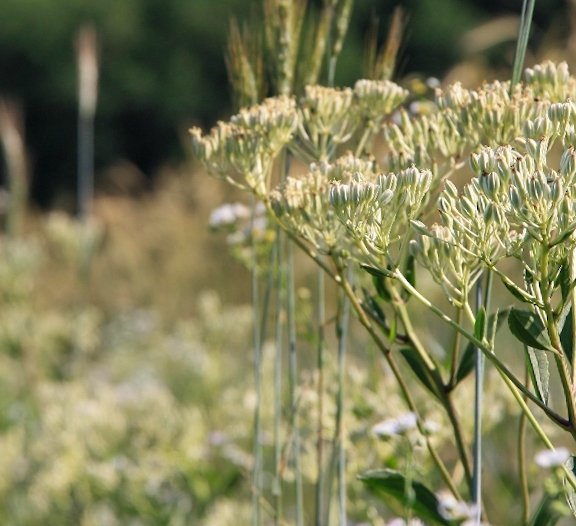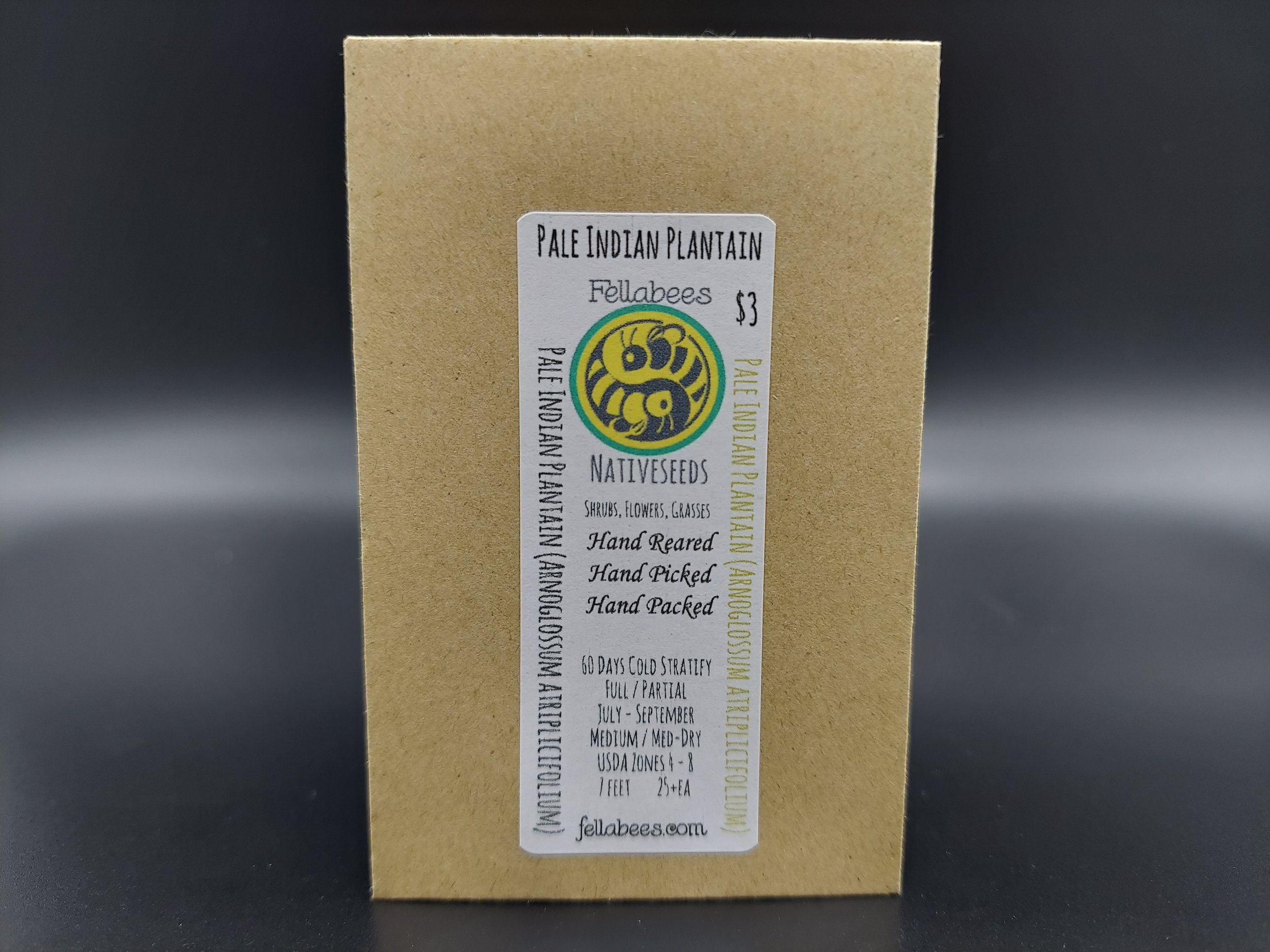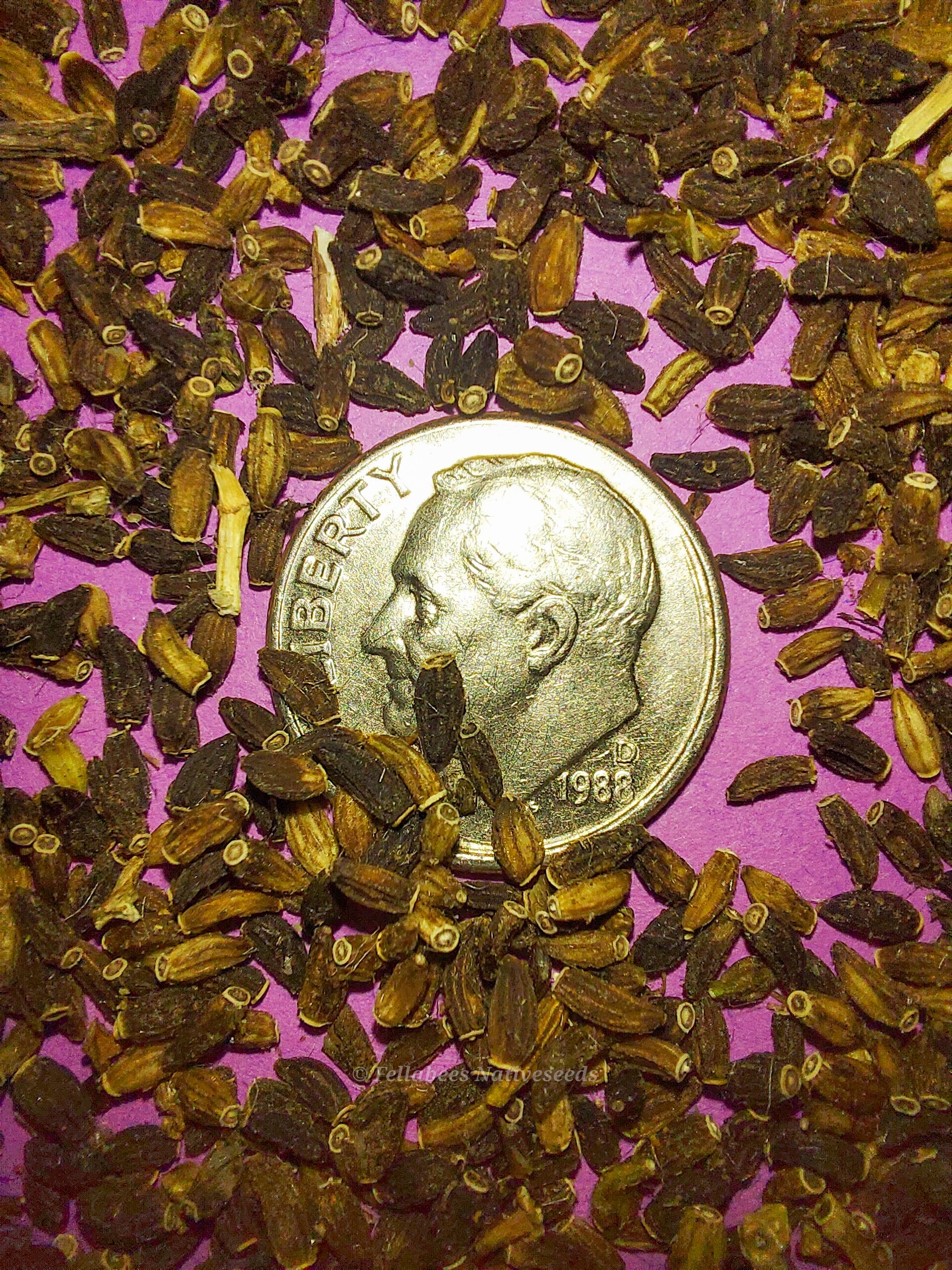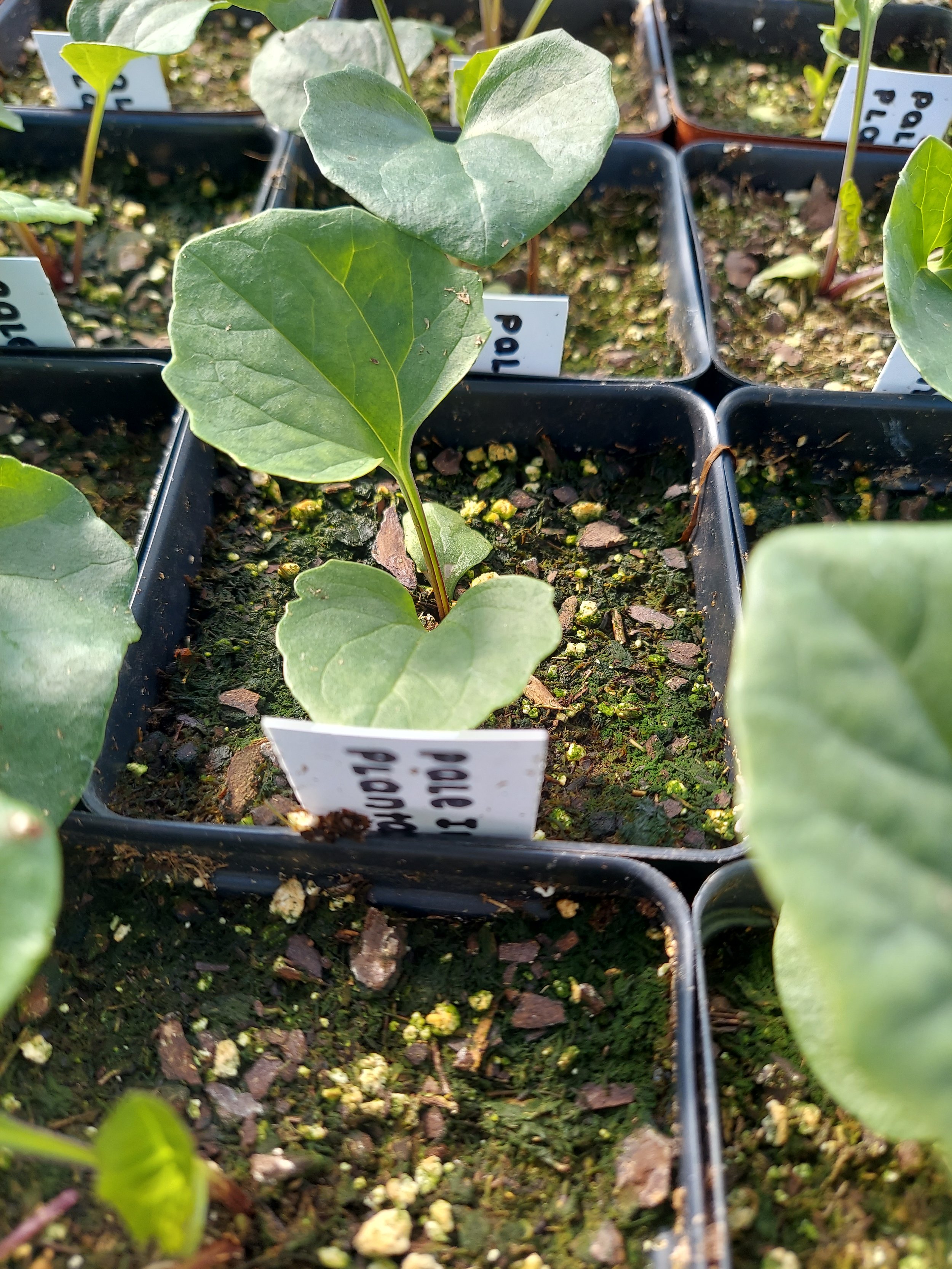 Image 1 of 4
Image 1 of 4

 Image 2 of 4
Image 2 of 4

 Image 3 of 4
Image 3 of 4

 Image 4 of 4
Image 4 of 4





Pale Indian Plantain (Arnoglossum atriplicifolium)
Pale Indian Plantain (Arnoglossum atriplicifolium)
Arnoglossum atriplicifolium, commonly known as Pale Indian Plantain, is a native perennial of North American wildflower in the sunflower family.
It is widely distributed through the central and eastern United States from the East Coast westward as far as Kansas, but it is currently listed as endangered in the state of New Jersey.
Pale Indian Plantain is a large perennial which it can get up to 120 inches or 10 feet tall, spreading by means of underground rhizomes.
Stems are usually unbranched. Flower heads are white, but can sometimes be a bit of green or purple, with disc florets but no ray florets. It grows in pastures, roadsides, and edges of woods.
It's flowers can often be found blooming from July to September.
USDA Zones: 4-8
Germination Needs: 60 Days Cold Stratification
Life Cycle: Perennial
Sun Exposure: Full to Partial
Soil Moisture: Medium, Medium-Dry
Plant Spacing: 3-4 feet
Height: 7ft
Bloom time: July, August, September
Bloom Color: White
Advantages :
Bird Favorite: seeds, insects, fruit, nectar, nesting, perchs.
Deer Resistant: Yes
Native to: Wisconsin, Iowa, Illinois, Indiana, Michigan, Ohio, Pennsylvania, New York, New Jersey, Delaware, Maryland, West Virginia, Virginia, Kentucky, Tennessee, North Carolina, South Carolina, Georgia, Florida, Alabama, Mississippi, Louisiana, Arkansas, Missouri, Oklahoma, Kansas, and Nebraska.
This species is considered present but rare in several counties of the states of New Jersey, Delaware, Louisiana, Oklahoma, and Nebraska.
This species is considered to be extirpated (locally extinct) in several counties of the state of New York.
.
.
Packet quantities:
We pride ourselves on ethical, hands on, ecological management, using no mechanical or chemical methods whatsoever.
All of our native seed is hand reared, hand picked, and hand packed from native prairies under our exclusive management, never breaking chain of custody from the field until it is sent to you. Each packet is hand prepared for shipment by us, directly.
Small seed species will contain greater than 20-25 seed
Large seed species will contain greater than 10-15 seed
It is our mission to spread the wealth of native plant and pollinator ecological sustainability, and educate back yard gardeners as well as corporate and government entities in how to germinate, grow, and benefit from native synergies.
Thank you for your support, it is because of you, that we can grow together to do, what we do.🐛🦋🐝🐞🌾🌱🌼🧡
Pale Indian Plantain (Arnoglossum atriplicifolium)
Arnoglossum atriplicifolium, commonly known as Pale Indian Plantain, is a native perennial of North American wildflower in the sunflower family.
It is widely distributed through the central and eastern United States from the East Coast westward as far as Kansas, but it is currently listed as endangered in the state of New Jersey.
Pale Indian Plantain is a large perennial which it can get up to 120 inches or 10 feet tall, spreading by means of underground rhizomes.
Stems are usually unbranched. Flower heads are white, but can sometimes be a bit of green or purple, with disc florets but no ray florets. It grows in pastures, roadsides, and edges of woods.
It's flowers can often be found blooming from July to September.
USDA Zones: 4-8
Germination Needs: 60 Days Cold Stratification
Life Cycle: Perennial
Sun Exposure: Full to Partial
Soil Moisture: Medium, Medium-Dry
Plant Spacing: 3-4 feet
Height: 7ft
Bloom time: July, August, September
Bloom Color: White
Advantages :
Bird Favorite: seeds, insects, fruit, nectar, nesting, perchs.
Deer Resistant: Yes
Native to: Wisconsin, Iowa, Illinois, Indiana, Michigan, Ohio, Pennsylvania, New York, New Jersey, Delaware, Maryland, West Virginia, Virginia, Kentucky, Tennessee, North Carolina, South Carolina, Georgia, Florida, Alabama, Mississippi, Louisiana, Arkansas, Missouri, Oklahoma, Kansas, and Nebraska.
This species is considered present but rare in several counties of the states of New Jersey, Delaware, Louisiana, Oklahoma, and Nebraska.
This species is considered to be extirpated (locally extinct) in several counties of the state of New York.
.
.
Packet quantities:
We pride ourselves on ethical, hands on, ecological management, using no mechanical or chemical methods whatsoever.
All of our native seed is hand reared, hand picked, and hand packed from native prairies under our exclusive management, never breaking chain of custody from the field until it is sent to you. Each packet is hand prepared for shipment by us, directly.
Small seed species will contain greater than 20-25 seed
Large seed species will contain greater than 10-15 seed
It is our mission to spread the wealth of native plant and pollinator ecological sustainability, and educate back yard gardeners as well as corporate and government entities in how to germinate, grow, and benefit from native synergies.
Thank you for your support, it is because of you, that we can grow together to do, what we do.🐛🦋🐝🐞🌾🌱🌼🧡
Pale Indian Plantain (Arnoglossum atriplicifolium)
Arnoglossum atriplicifolium, commonly known as Pale Indian Plantain, is a native perennial of North American wildflower in the sunflower family.
It is widely distributed through the central and eastern United States from the East Coast westward as far as Kansas, but it is currently listed as endangered in the state of New Jersey.
Pale Indian Plantain is a large perennial which it can get up to 120 inches or 10 feet tall, spreading by means of underground rhizomes.
Stems are usually unbranched. Flower heads are white, but can sometimes be a bit of green or purple, with disc florets but no ray florets. It grows in pastures, roadsides, and edges of woods.
It's flowers can often be found blooming from July to September.
USDA Zones: 4-8
Germination Needs: 60 Days Cold Stratification
Life Cycle: Perennial
Sun Exposure: Full to Partial
Soil Moisture: Medium, Medium-Dry
Plant Spacing: 3-4 feet
Height: 7ft
Bloom time: July, August, September
Bloom Color: White
Advantages :
Bird Favorite: seeds, insects, fruit, nectar, nesting, perchs.
Deer Resistant: Yes
Native to: Wisconsin, Iowa, Illinois, Indiana, Michigan, Ohio, Pennsylvania, New York, New Jersey, Delaware, Maryland, West Virginia, Virginia, Kentucky, Tennessee, North Carolina, South Carolina, Georgia, Florida, Alabama, Mississippi, Louisiana, Arkansas, Missouri, Oklahoma, Kansas, and Nebraska.
This species is considered present but rare in several counties of the states of New Jersey, Delaware, Louisiana, Oklahoma, and Nebraska.
This species is considered to be extirpated (locally extinct) in several counties of the state of New York.
.
.
Packet quantities:
We pride ourselves on ethical, hands on, ecological management, using no mechanical or chemical methods whatsoever.
All of our native seed is hand reared, hand picked, and hand packed from native prairies under our exclusive management, never breaking chain of custody from the field until it is sent to you. Each packet is hand prepared for shipment by us, directly.
Small seed species will contain greater than 20-25 seed
Large seed species will contain greater than 10-15 seed
It is our mission to spread the wealth of native plant and pollinator ecological sustainability, and educate back yard gardeners as well as corporate and government entities in how to germinate, grow, and benefit from native synergies.
Thank you for your support, it is because of you, that we can grow together to do, what we do.🐛🦋🐝🐞🌾🌱🌼🧡
